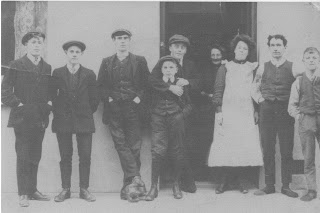NOTES from Evocative Objects and my attempt to relate the object, i.e. the hair curler/roller, to the theory of things.
Theory enables us to explore how everyday objects become part of our inner life: how we use them to extend the reach of our sympathies by bringing the world within"
(Turkle: 307)
Create Associations - combine objects and theories.
The philosophy of the objects and the inner self.
(Turkle: 307)
"No ideas but in things" William Carlos Williams (Poet). The thing carries the idea.
Claude Levi Strauss (Anthropologist) Connection to the Cognitive. The man pulling toys apart and putting them together again was becoming a scientist.
BRICOLEUR - BRICOLAGE - Style of working in which one manipulates a closed set of materials to develop new thoughts. (Turkle: 308)
Jean Paget objects help us think of number, space, time, causality and life. Learning is situated, concerte and personal. (Turkle: 309). As a boy plays with a toy, so he is seeing himself capable of inventing an idea and changing in other ways as well. (Turkle: 309).
"Object play engages the heart as well as the mind, it is a source of inner vitality. Far from being silent companions, objects infuse learning with libido"(Turkle:309).
Seymour Papert (Mathematician)"I fell in love with the gears" Intimate connection with the object "gears." (Turkle: 309)
The Curler
My journal entry for the 30th December 2011 begins "My hair looks fab! Full of curls......." Later I wondered why did a full head of curls make me feel so "fabulous."
My first thought was that the price of vanity is a sleepless night.
But it's not vanity that I feel, it is an inner warmth and happiness; putting rollers in my hair to give me a "curly head" brings back a joyous memory; a delight seeing myself in the mirror with soft curls reminding me of the joy my mother felt when she was allowed to curl my hair. I love the softness that surrounds my face and the gleam in my eye reflected back at me. The sight makes me smile inside.
I am taken back to Sunday nights, early 1960's, bath night. At that time bath water was shared by my siblings and I. When my brothers and sisters had all left home, I had the pleasure of a hot bath to myself. Radio blaring, "Pick of the Pops," Sunday evening, chart night. In the 1960's the anticipation of which pop song had reached No1 was a special event, at least I thought so.
After my bath, I would slip into my PJ's and go and sit in the old round wooden chair next to the glowing fire in the Agar, to keep warm. I sat while my mam curled my hair. We chatted, I moaned if the rollers were too tight, but she didn't take any notice of my moaning and carried on as if I had said nothing. It wasn't because she didn't care, I think after having seven children, she was probably oblivious to our moans.
A sleepless night usually ensued, the discomfort of the rollers, pinching my head, unable to find a comfortable position, was not conducive to sleep. But when I woke in the morning impatient to take the rollers out... ah..., what a relief, my head released from the discomfort and weight, that by now felt as if a ton of pins sat on my head. It was sheer delight.
Looking in the mirror at the curls laying softly about my shoulders was bliss. My mam always said how pretty I looked. This was a rare compliment for me. I was not the pretty one of the family. My other sisters, all four of them, held that privilege. I grew up believing that I was the ugly duckling of the family, but I had inherited my grandfathers' nose, an unfortunate inheritance, but there was nothing I could do about it, so I accepted my fate. But with a head full of curls, this was my moment to shine, and I relished it.
With age comes a little wisdom, beauty in the traditional sense became to matter less and less. When I look at photographs of all of us, we are all remarkably alike, Edwards nose or Davies nose.
So that the reader is not under any illusion that because I did not consider myself as beautiful as my sisters, that I suffered in any way, this is truly not the case. I was blessed with a musical talent that I also inherited from my mother's side of the family, and I was the only one of my siblings to pass the eleven plus and attend the Grammar School. So what I lacked in beauty, I made up for in other ways. My family have always been very proud of my achievements, even though there have been no great achievements to speak of.
The realisation that having a head of curls, being excited at the prospect of putting the curlers in, enjoying the moment, and the memory of the whole experience with my mother, returning unexpectedly to make me smile.
the object and the inner self ........
















